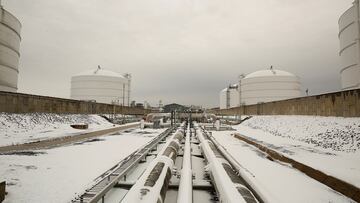US Energy Information Adminstration projects households to pay 28 percent more for natural gas this winter
Inflation could be back on the rise again this winter as energy prices are expected to increase with demand.


The US Energy Information Administration (EIA) has published its winter fuel outlook for this year and it doesn’t make pretty reading.
Average costs are expected to increase by 28 percent from last year, or up to $931.
Global gas prices have increased since the Russian invasion of Ukraine. The Russian government has stopped much of the export of natural gas to the European market in reaction to sanctions, pushing up its price.
The EIA said residential costs will rise to $15.95 per thousand cubic feet (mcf) for gas, $2.32-$3.45 per gallon for propane, 14.8 cents per kilowatt-hour (kwh) of electricity and $4.54 per gallon for heating oil.
Quick turnaround:
— David Asman (@DavidAsmanfox) October 17, 2022
2019: “...everything looks rosy for the US natural-gas industry, thanks to the transformation that shale has brought.“
Today: “..cold spells in the Northeast could reduce the amount of gas available to generate electricity as more of it is burned to heat homes.” pic.twitter.com/baOUZxD1Zs
Reuters has reported that gas heats around half of all homes in the US. Other fuels are having price increases, though not quite as drastic as that for gas.
The cost increases for heating oil and propane are 27 percent and 5 percent respectively. Electricity is the primary heating source for about 40 percent of homes and the price is going up by 10 percent.
| Fuel | Usage (%) | Average price ($) | Percentage increase from 2021 |
|---|---|---|---|
| Gas | 50 | 931 | 28 |
| Electricity | 40 | 1,359 | 10 |
| Heating oil | 5 | 2,354 | 27 |
| Propane | 4 | 1,668 | 5 |
How will people be able to afford these increases?
The US Department of Commerce published its August edition of its Personal Income and Outlays data at the end of September. While it did show a marginal increase in personal income, it also included worrying numbers for an important section of the economy when times are tough; personal savings.
At the height of the 2021 covid-19 support, personal savings as a percentage of disposable income was at 20.4 percent, one of the highest rates ever. Before the pandemic the OECD expected people to save 6.88 percent of their income in 2020.
Related stories
There has been a sharp and rapid decline in the amount of savings. Q2 2022 data suggests savings now make up just 3.4 percent of personal income, less than half that expected in 2020.
This means Americans are both spending their savings while also putting little else away. Considering this data was sourced before the Autumn, and with prices still rising, this lack of savings could come back to bite people come this gas price rise for winter.

